The Thailand floating markets are one of the most famous experiences the country has to offer.
Renowned for their vibrant culture, rich history, and, of course, their food, the Thailand floating markets are a unique, must-see for any traveler.
They are far more than the average street market found around the world. And while they may have lost most of their tradition to modern times, they will still offer you a glimpse into what Thai life was like.
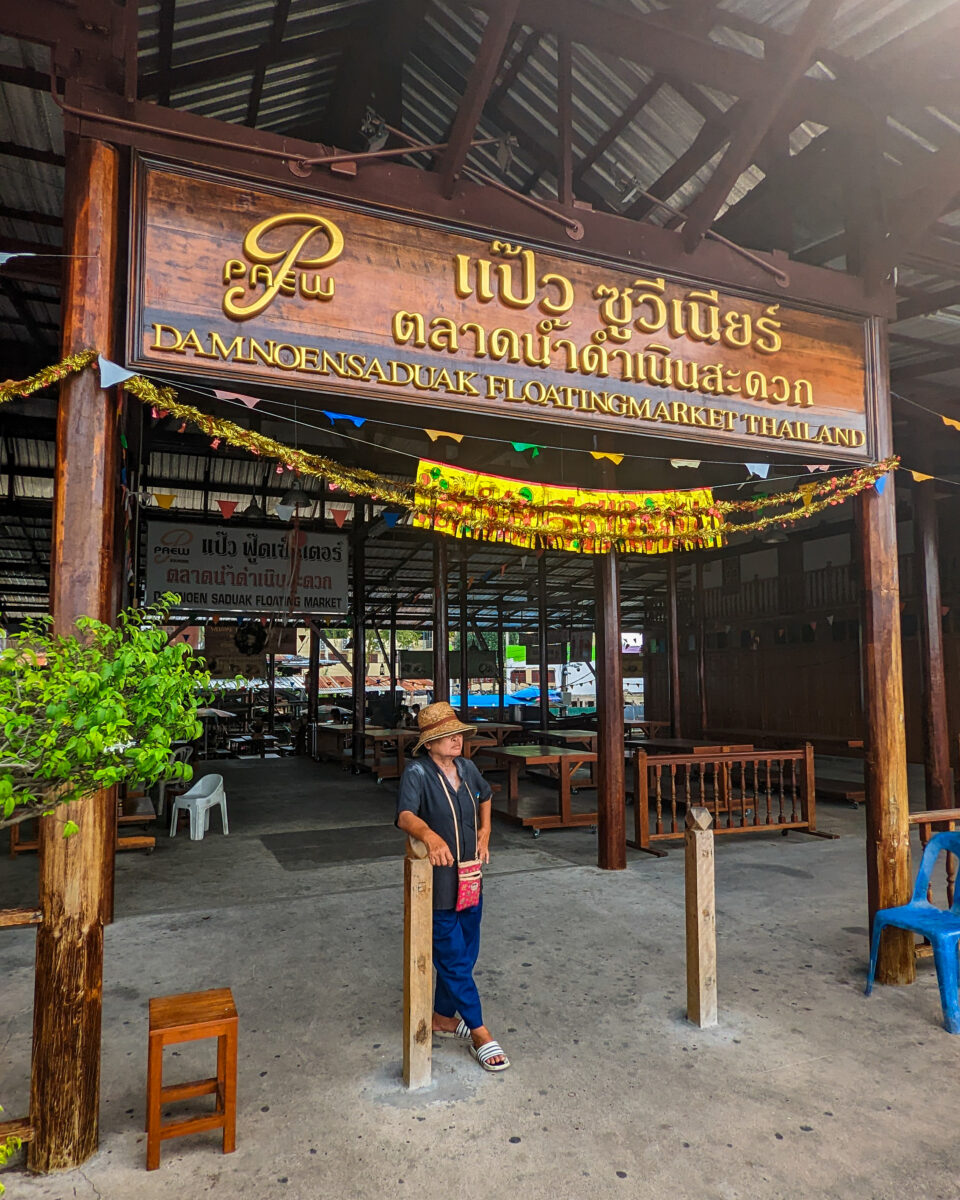
What are the Thailand floating markets?
The floating markets in Thailand are deeply rooted in the country’s history. They originated from the ancient practice of locals trading goods along the country’s extensive network of canals.
These markets evolved over the years into hubs of commerce and culture. In the past, waterways were the primary means of transportation and trade, and floating markets became essential to local economies.
The canals made it easy to transport goods by water and to build houses on the banks with small piers for boats. Traders would buy produce from local farmers on the banks of the canals and sell basic necessities to them in return.
These areas eventually developed into full-blown waterfront marketplaces.
Unfortunately, the markets began to die out in the mid-20th century, when the creation of a road and rail system changed the transportation system.
The advent of trains did birth the creation of the amazing Maeklong Railway Market, but more on that next week!
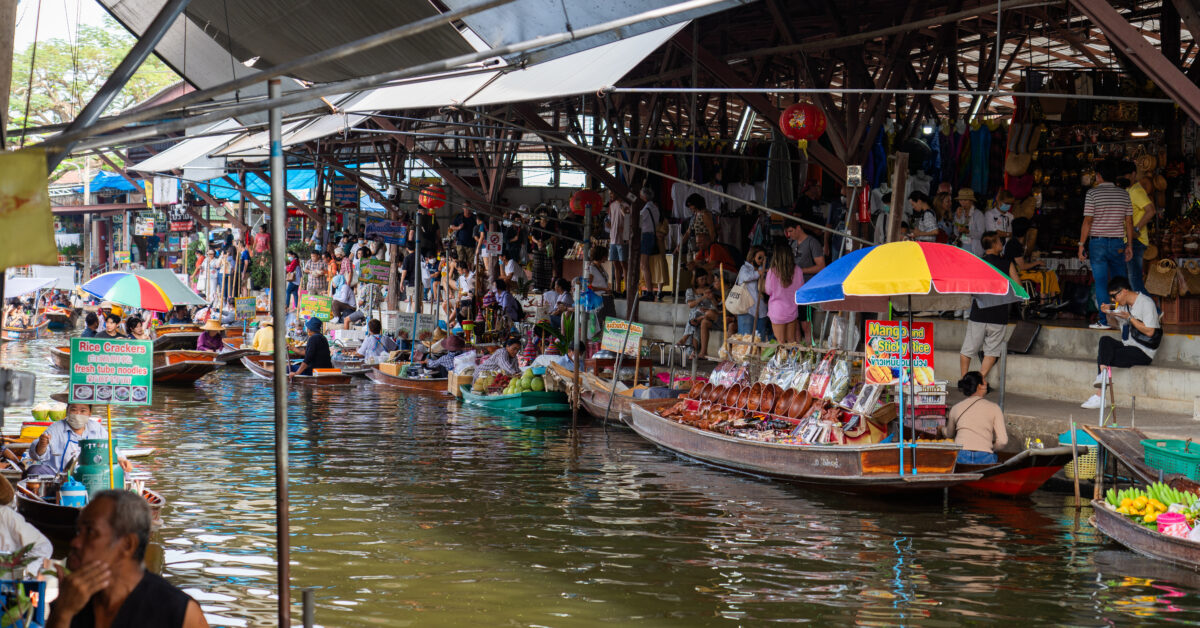
What are the Thailand floating markets NOW?
Unfortunately, the current floating markets are tourist traps in every sense.
In the 1960s, the Thai Tourism Authority introduced a floating market in the Ludplee canal purely for tourism purposes.
Then, in the late 1990s and early 2000s, the Thai government began a community-based tourism initiative aimed at reviving ancient ways of living along the canals and preserving agricultural villages.
It was a massive success.
This led to the development of other floating markets like Thaka, Amphawa, and Bang Namphueng, now all popular tourist attractions.
Does this mean you should skip them since they’re a tourist trap?
No! Not at all!
I’ve said it a million times. Sometimes a tourist trap is the only way you’ll be able to experience certain things. Just view this as looking back in time, while also picking up a few cheap souvenirs and enjoying some great food.
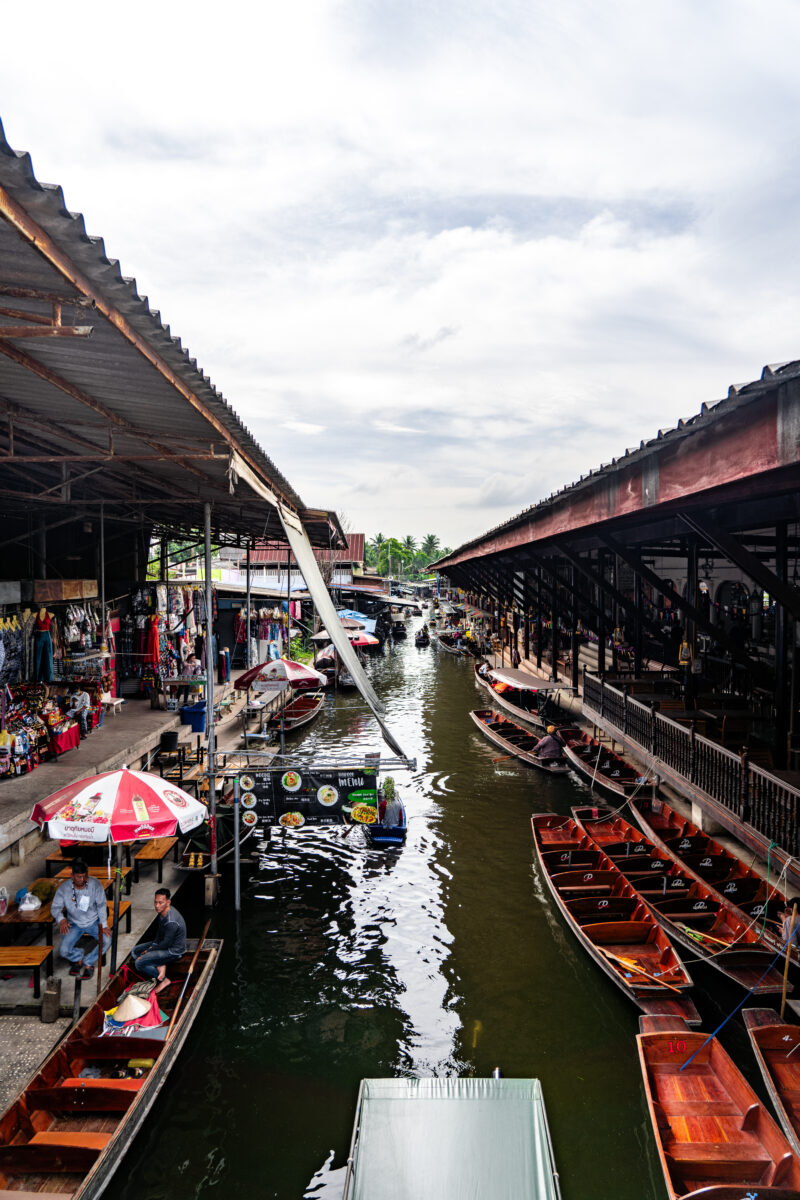
Popular Floating Markets of Thailand
Damnoen Saduak Floating Market:
The most famous of Thailand’s floating markets, Damnoen Saduak is located about 100 kilometers southwest of Bangkok. Its atmosphere is characterized by narrow canals packed with boats selling everything from fresh fruits and vegetables to souvenirs and local cuisine.
This was the first market I visited. While I was here at the tail end of COVID, it was still relatively full of people and made for an interesting experience.
While here be sure to hire a boat to take you around the canals for a more traditional point of view.
I did run into a slight issue with my boat. I had paid double to be guaranteed a seat at the front of the boat, for photography purposes. Then I somehow still ended up at the back.
This led to a bit of verbal sparring with the group of Brits who swiped my seat. Ultimately, I just stood up in the boat to get some unobstructed photographs. Neither the boat driver nor the Brits were happy with that. Don’t like it? Well, why did you scam me then?
The Damnoen Saduak Floating Market is open Monday – Friday from 8:00 a.m. – 4:00 p.m.
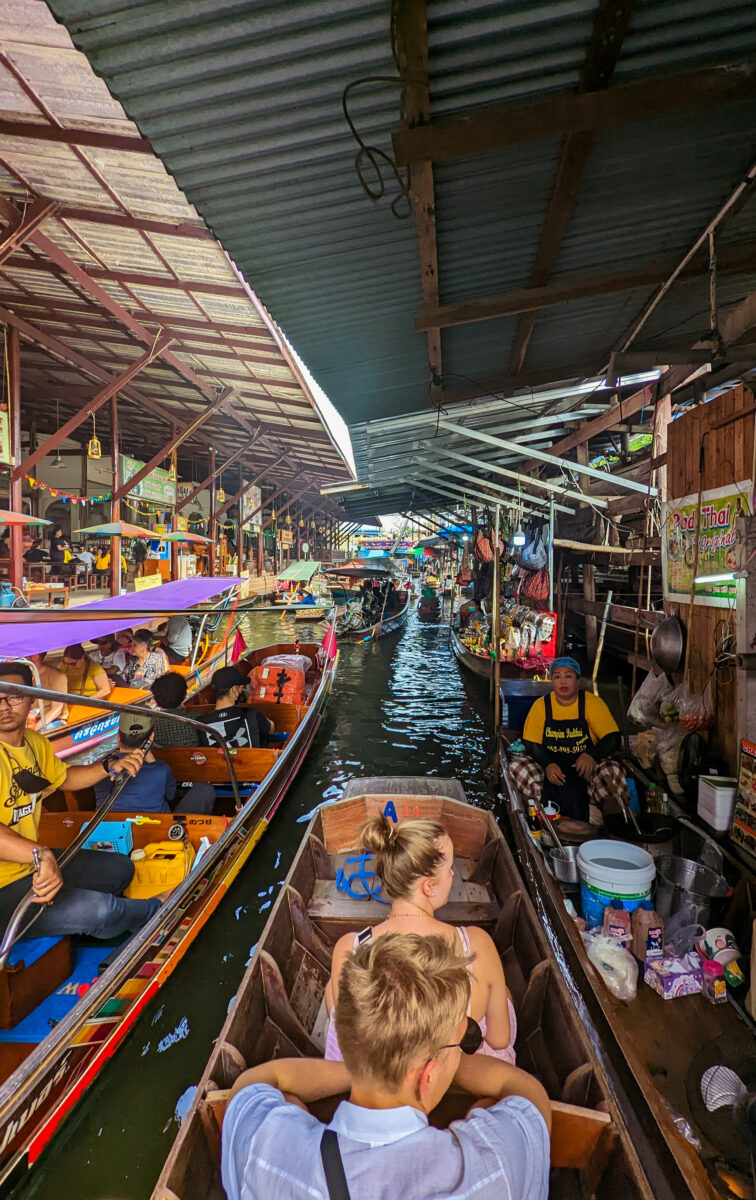
Amphawa Floating Market:
Located about 50 kilometers southwest of Bangkok, Amphawa offers a more laid-back alternative to the bustling Damnoen Saduak.
This market is famous for its delicious seafood, particularly the grilled prawns and squid. Then, as the night creeps in, the market transforms into a charming scene with lanterns reflecting on the water and local boats selling a variety of snacks and sweets.
Amphawa Floating Market is open Friday, Saturday, and Sunday from 2:00 p.m. – 9:00 p.m.
Taling Chan Floating Market:
Located in Bangkok, this market is smaller and less touristy than the previous two and provides a more authentic experience with a focus on local food.
Here you’ll enjoy traditional Thai dishes cooked on boats, and take a canal tour to explore the surrounding area.
Or, if you’re feeling more “wanderous”, you can take a boat from here to other attractions in this area, such as Luang Pho Dam, an ancient sacred Buddha image at a nearby Wat Chang Lek temple.
Even though it was the smallest out of the three I visited, Taling Chan felt the most authentic to me.
A good way to tell is to look at what they’re selling. This market was low on souvenirs, but high on food. When locals go to a market to purchase fresh produce from each other, you’re usually onto something.
Taling Chan Floating Market is only open on Saturday and Sunday from 7:30 a.m. – 6:00 p.m.
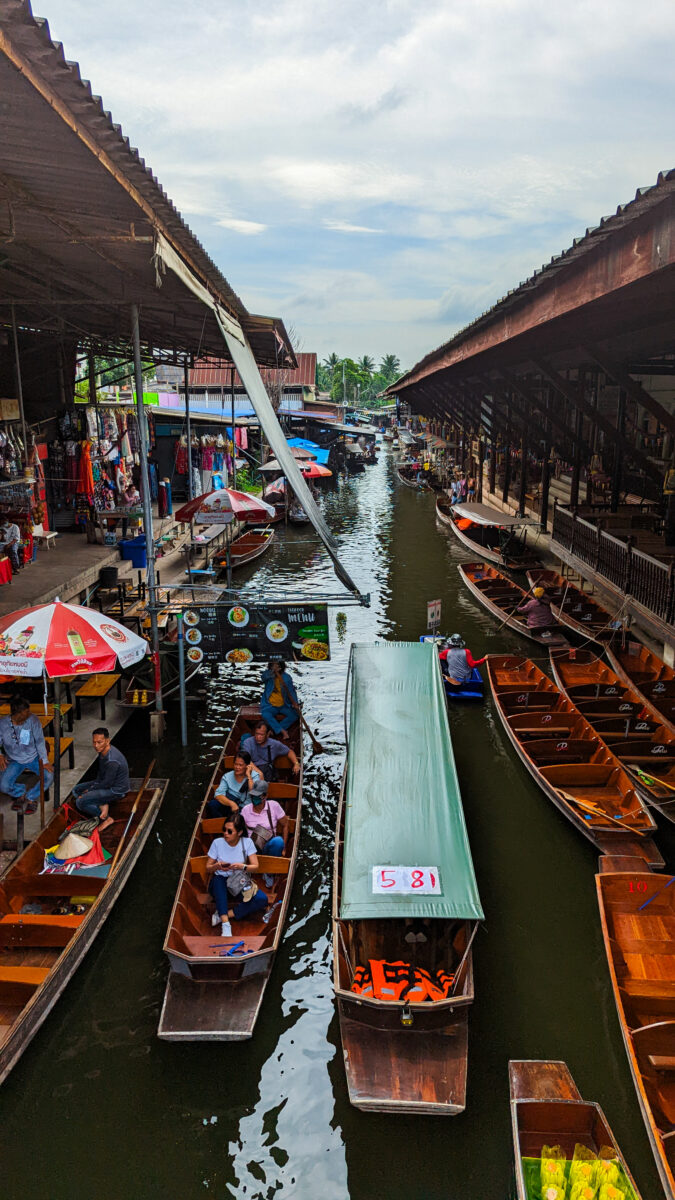
Khlong Lat Mayom Floating Market:
Khlong Lat Mayom, also located in Bangkok, is supposed to be a hidden gem that tends to be overshadowed by the more famous floating markets.
Known as an excellent place to experience traditional Thai foods and crafts in a relaxed atmosphere, I’d say that the overshadowed billing fits it well as I didn’t even know of its existence while I was in the area.
Frankly, I’m a little disappointed that I missed out on this one.
Khlong Lat Mayom Floating Market is open Saturday and Sunday from 8:00 a.m. – 5:00 p.m.
Don Wai Floating Market:
Don Wai floating market is not far from Bangkok, in Sam Phran District, Nakhon Pathom Province on the Tha Chin River.
This market is famous for a variety of foods such as stewed Java barb in salty soup especially Chinese stewed duck.
It is also not far from one of the most prominent temples of Nakhon Pathom, Wat Rai Khing, which can be reached by boat on the Tha Chin River.
Don Wai Floating Market is open Monday – Friday from 8:00 a.m. – 5:00 p.m. and Saturday and Sunday from 7:00 a.m. – 6:30 p.m.
Kwan Riam Floating Market:
Kwan Riam floating market is in Min Buri District, Bangkok, near Khlong Saen Saep.
Its name comes from the name of characters in a popular Thai romance-drama novel titled Plae Kao, as Khlong Saen Saep was used as the backdrop of this novel. Super traditional, right?
The highlight of this market is a boat-shaped bridge that connects Wat Bamphen Nuea and Wat Bang Pheng Tai.
Kwan Riam Floating Market is open Saturday and Sunday from 7:00 a.m. – 5:00 p.m.
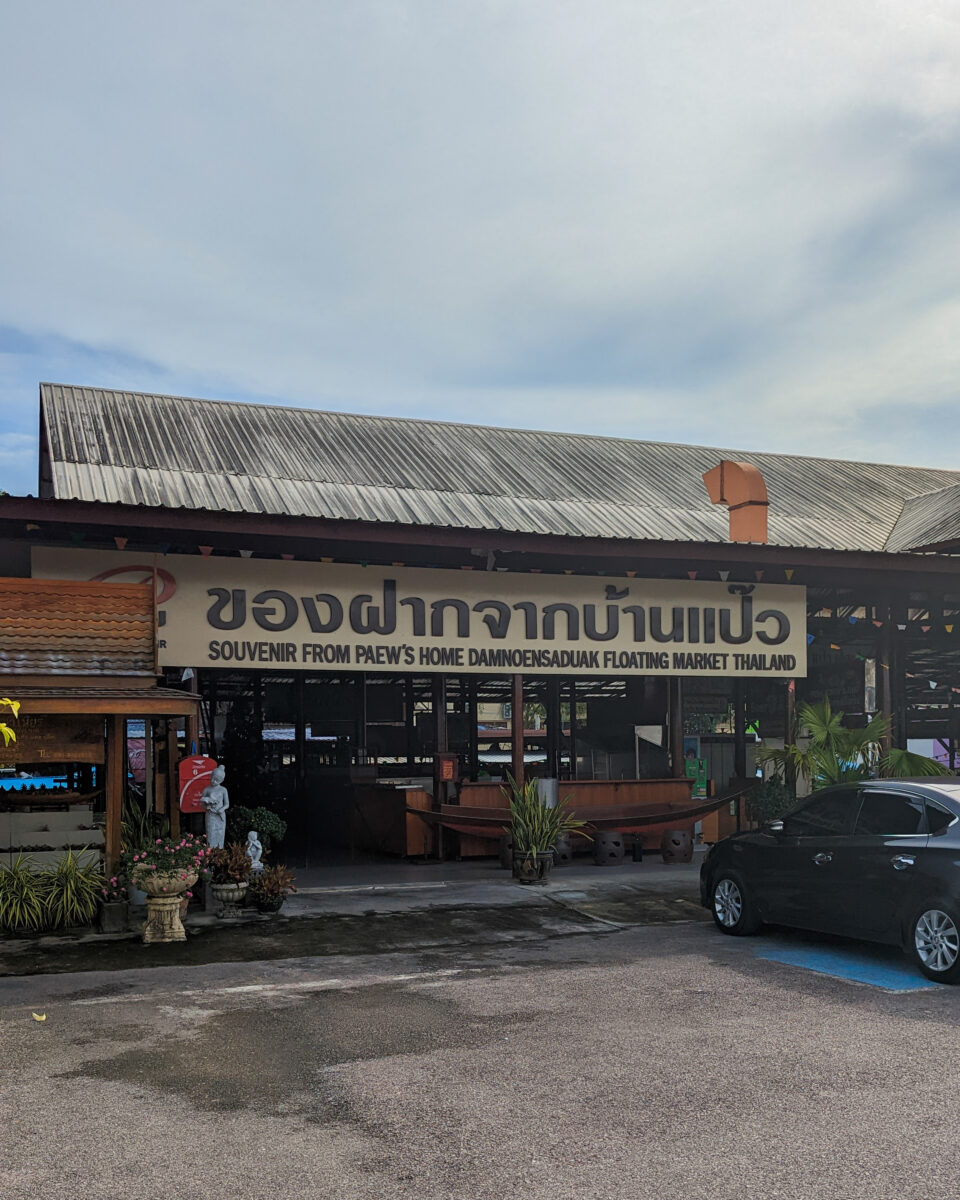
Other Markets
The floating markets of Thailand that I have chosen to highlight are primarily in the northern region, in and around Bangkok. There are however other Thailand floating markets in touristy locations such as Phuket and Pattaya, but I didn’t choose to visit them.
Tips for Visiting Thailand’s Floating Markets
Go Early: If you’re visiting Damnoen Saduak or any other busy market, arriving early will help you avoid the crowds and enjoy a better experience that feels more authentic. Otherwise, be prepared for people, people, people.
Mind Your Transportation: This pertains to the markets that are outside of Bangkok such as Damnoen Saduak and Amphawa. If you’re going as part of a tour then you’ll have no problems, but if you’re rolling solo, things can get a bit tricky. I learned this the hard way.
At Damnoen Saduak, my taxi driver asked me if I wanted him to wait. Planning on being there for at least 4 hours, I told him I’d be fine so he left.
I figured that with all of the tourists, transportation would be more accessible. Boy was I wrong. Taxis are very difficult to come by in the area. That’s because everyone coming has their transportation wait.
Thailand doesn’t have Uber, but it does have Bolt and Grab. Unfortunately, neither of them was able to find me a ride. The parking attendant I spoke to said this wasn’t uncommon.
In the end, after A LOT of searching and much frustration, I found a local Tuk Tuk driver who was willing to take me to the next town over for about 3 times the normal rate. From there I got another Tuk Tuk to the next town.
It wasn’t until then that I was able to finally find a proper taxi and get back to the city.
This entire process took hours.
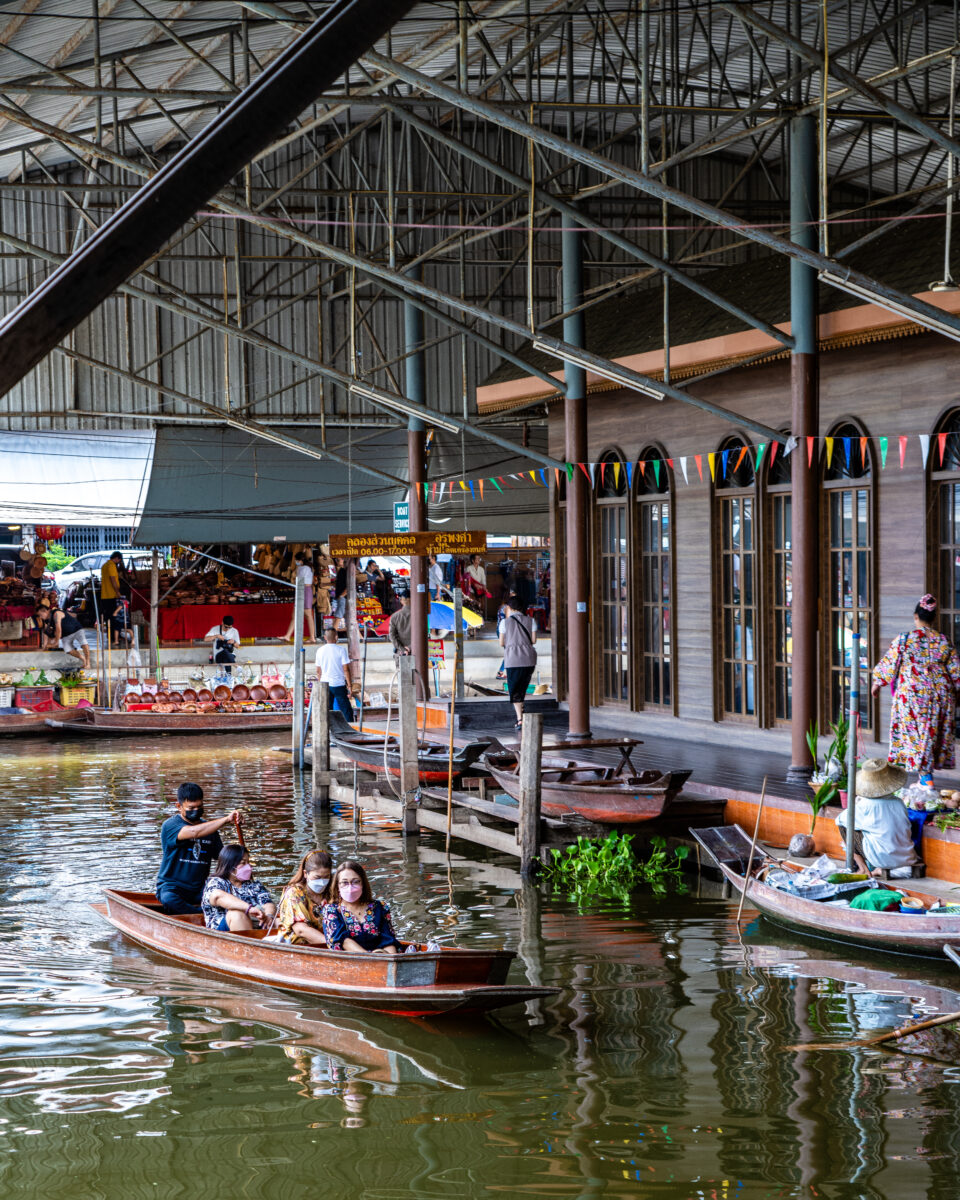
Respect Local Customs: Be polite and respectful to vendors and fellow visitors. It’s customary to greet with a wai (a traditional Thai gesture of placing your palms together and bowing slightly).
Also, respect the crown. Thailand is a monarchy, and they take that seriously.
Thailand has and does enforce something called national lese majeste laws. These laws expressly prohibit any act – verbal, physical, or written that shows insolent or disrespectful behavior toward any member of the Royal family.
How might you disrespect the royal family? Have you ever stepped on a dollar bill to stop it from blowing away in the wind?
Well, in Thailand this is illegal because the King’s face is printed and engraved on the Thai notes and coins. I know this might sound ridiculous to a Westerner, but it’s their law, and you never know who is watching, so be careful.
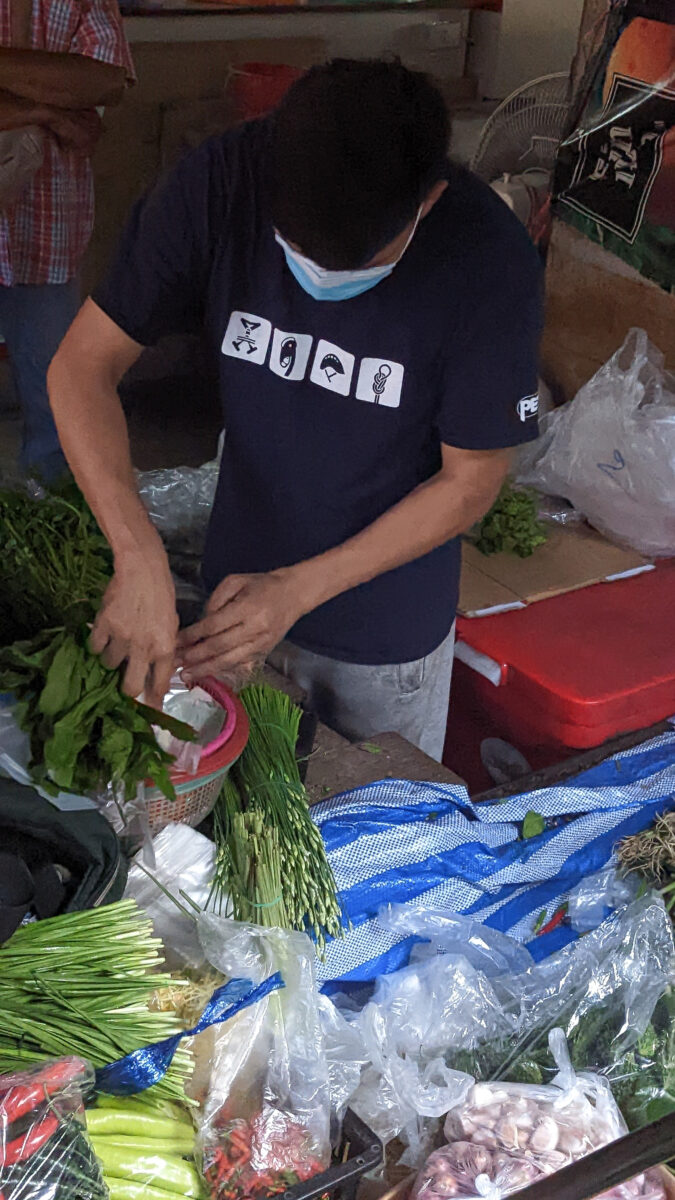
Visiting the floating markets of Thailand is more than just a trip to another tourist trap. It is a unique experience that offers a glimpse into the Thailand of old and is a must-see for anyone visiting this beautiful country.
DID YOU ENJOY THIS ARTICLE? PIN IT!
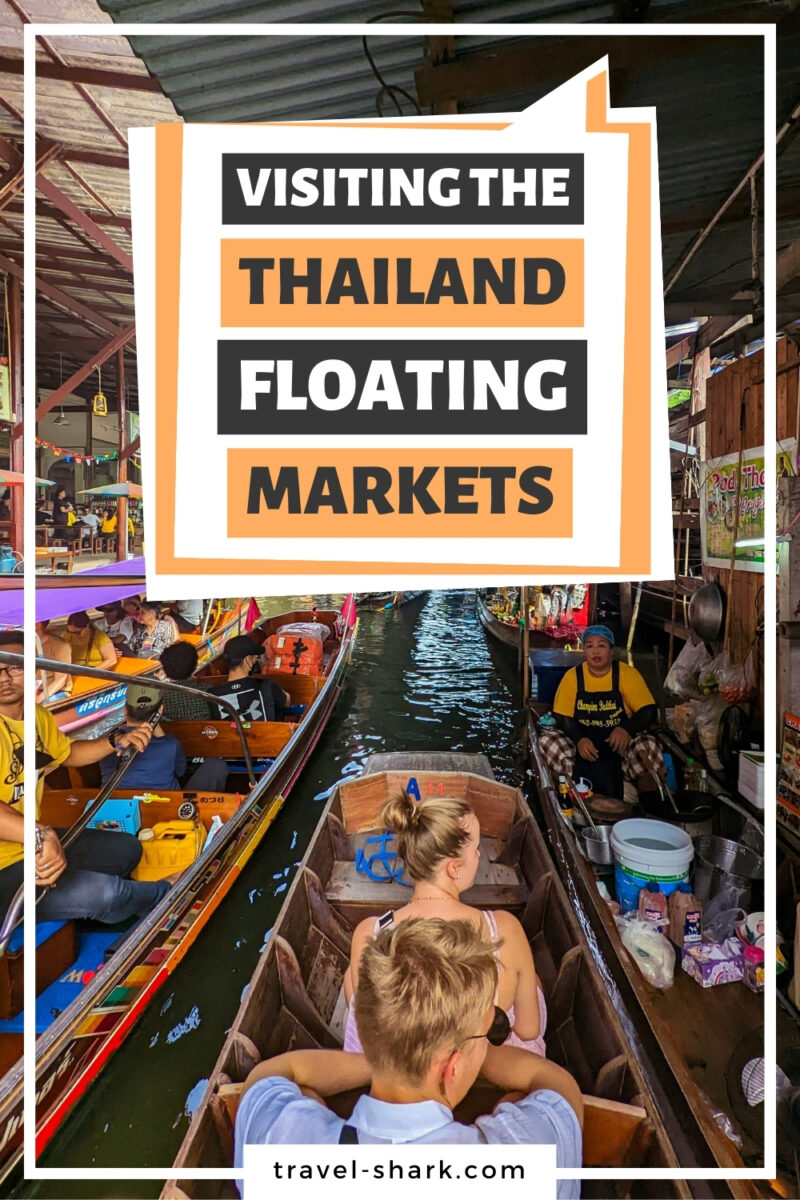

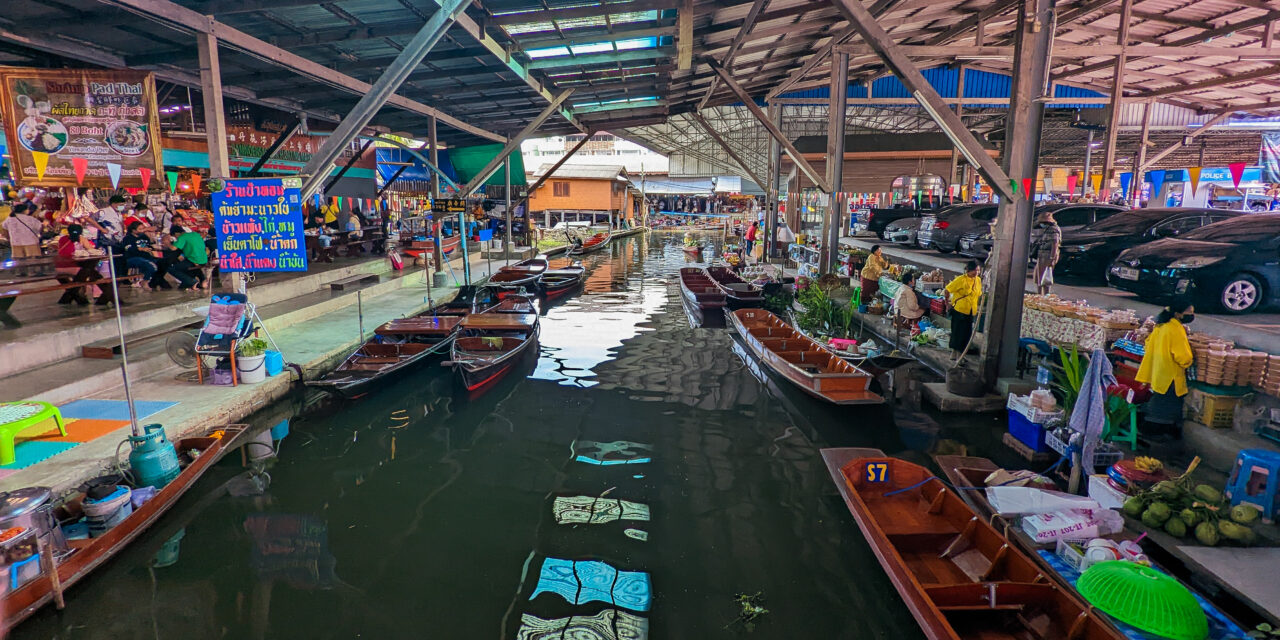

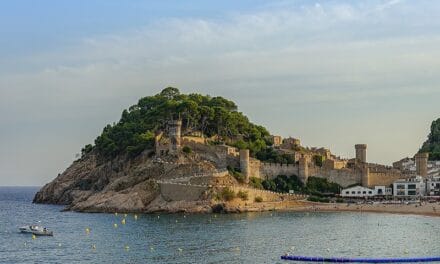
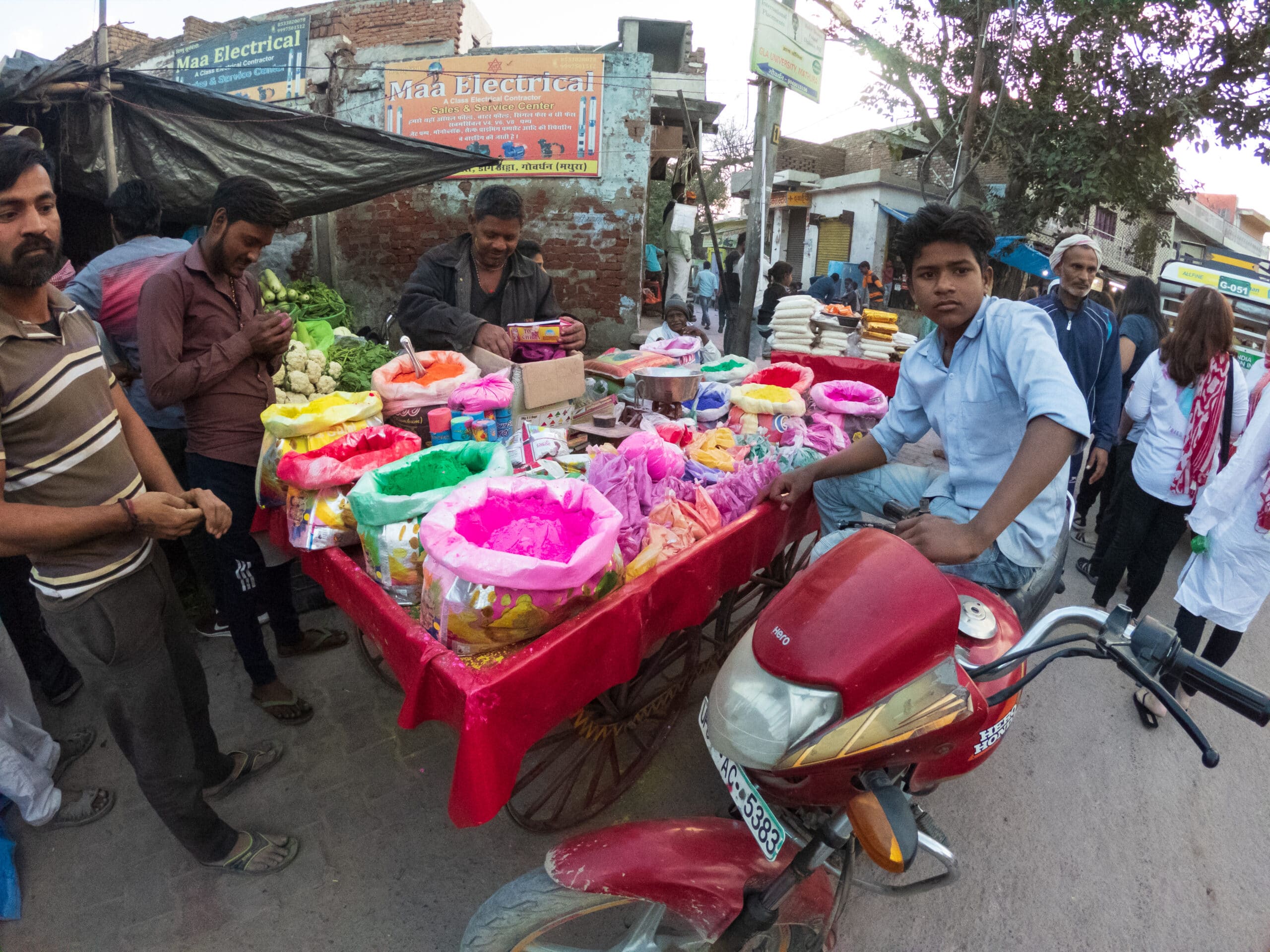


[…] in the Samut Songkhram province, just an hour outside Bangkok, lies the natural successor to Thailand’s floating markets—the Maeklong Railway […]